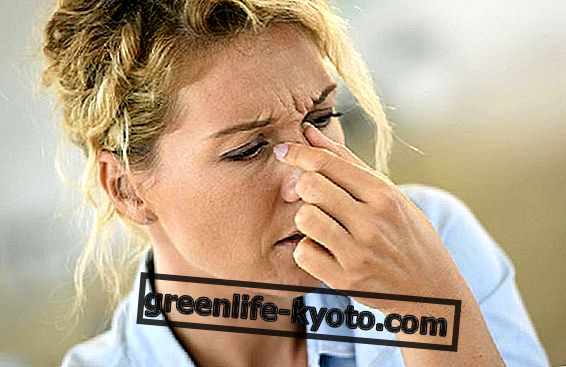
One of the most difficult things to understand for people approaching the Buteyko method is to understand why Buteyko always said:
"The less one breathes, the more one breathes".
A sentence that is a bit cryptic and always of certain effect during courses and conferences. But why did Buteyko say this?
Just the people with respiratory problems, for example asthmatics, in their everyday life feel a strong desire to breathe a lot, but does their breathing really bring improvements or does it make the situation even more difficult?
Breathing more actually has no significance for the body in terms of oxygen supply but instead has a major negative impact on the person's general health due to the loss of large amounts of carbon dioxide, gas that without a its adequate pressure in the body means that respiratory exchanges cannot take place at their best.
The pathologies related to this problem are not limited only to asthma or allergies but they are really many, as demonstrated by Buteyko in his experiments and confirmed by the Russian Ministry of Health which in 1985 declared the method an official part of the treatment protocols.
It was precisely from the discovery that "too much breathing" is actually what prevents the tissues from breathing well that Dr. Buteyko has set up all his studies that have accompanied him throughout his life.
This finding was even more confirmed by the studies of Verigo and Bohr who, many years before, had shown that the red blood cell (hemoglobin) can discharge its load of oxygen to the cells only if there is sufficient pressure in them (presence) of carbon dioxide.
We can therefore say more CO2 (carbon dioxide) equal more O2 (oxygen).
So only in the presence of adequate carbon dioxide pressures can good respiratory exchanges take place and the people who breathe too much, unfortunately, with their great and incessant breath do nothing but worsen the situation and affect the work of their red blood cells.
In fact the common thinking is: I breathe more so I bring more oxygen to the cells.
This is not true as red blood cells often work at full speed with hemoglobin saturation ("loading" of oxygen) at 98/99%, but still fail to do their job well because of fact that there is not enough carbon dioxide in the cells to be able to "exchange" with oxygen, in fact even an asthmatic in the moment of crisis feels a strong need for breath having the same "oxygen-filled" blood.
This happens in spite of the perfect load of the red blood cells that failing to discharge the oxygen to the cells make them perceive a sense of breathlessness.
For this reason it is useless to breathe more to try to "load" more oxygen, our red blood cells are "always" well loaded, the problem comes later, when this load is unloaded!
To take a case in point we could ask:
Can a full glass be filled more?
Instead we should worry about why we lose large amounts of carbon dioxide as an important "bargaining chip" to get precious oxygen from the blood.
The real problem is there!
We should try to recondition our breath by learning to breathe properly by preserving our body from unnecessary losses of carbon dioxide.
Let us forget what was foolishly offered to us at school and not only on the fact that more carbon dioxide could have been "thrown out" than carbon dioxide was just a poison to get rid of quickly, remember the warnings not to put plants in bedroom ect ect….
How many nonsense have been said and how many more are said about carbon dioxide.
Do you think that in an organism in which there is 120 times more carbon dioxide than oxygen this proportion indicates a "poisoned" organism?
We have been created in a perfect way with perfect balance and we have to "try to live" in a perfect way respecting certain balances that if they have been created certainly make sense.
But why then do we lose so much carbon dioxide?
Everything happens because hyperventilating (breathing too much) triggers a mechanism of loss of this important gas, loss due to processes attributable to the simple laws of gas dynamics that make a gas (in this case CO2) spread easily and quickly from one context (the organism) to the other (outside) when there is a strong pressure difference between the two contexts.
In fact, while carbon dioxide in the body has a pressure of about 6% on the outside in the air, this is drastically reduced to 0.03%.
One can easily understand how hyperventilating (breathing too much) this gas tends to easily "escape" from the small "human body" system to spread in the great immense system of external air.
It is the same principle that creates a strong wind when a mass of warm air meets a mass of cold air.
Hot air flows at speed towards the cold to counteract the pressures, in this case the temperatures.
Can a small system (organism) compete with a large system (the outside)?
No surely.
But it is not a question of competing but only of favoring the "right" exchanges through the organ appointed to do so, which is the nose and not the mouth!
Asthmatics in fact always breathe with their mouth both day and night and this is their real problem!
To understand how different breathing from the nose and mouth is, just take a simple test by going close to a mirror and breathing with your nose and then your mouth, the differences in the condensation of the breath will tell you long what the organ is that makes you breathe rightly less.
The nose is in fact the only real organ used for ventilation, the mouth can do it but only in certain precise situations.
However, if you are used to breathing with your mouth or you realize that due to stress or anything else you are hyperventilating, nothing is lost, in fact thanks to the Buteyko breath reconditioning exercises you can treat their effects (diseases) and you can find a proper breath that will ensure that you never have any health problems.
The exercises proposed by the method are essentially of three types.
First Aid Exercises : Able to withstand emergency situations, spasm attacks ect.
Healing Exercises : that with their regular development they treat sensitive pathologies.
Maintenance Exercises : These are used to maintain the general state of health.
There are exercises for adults and specific ones for children in order to be able to cover all situations from the youngest children to the elderly.
A simple method, natural for everyone but which needs people who really want to "heal" and then commit to doing the exercises.
Carlo Carlesi











